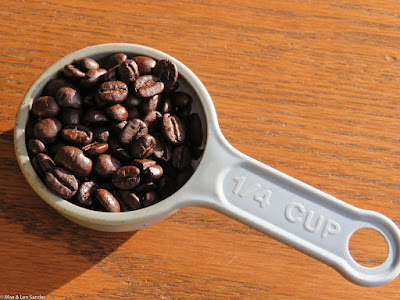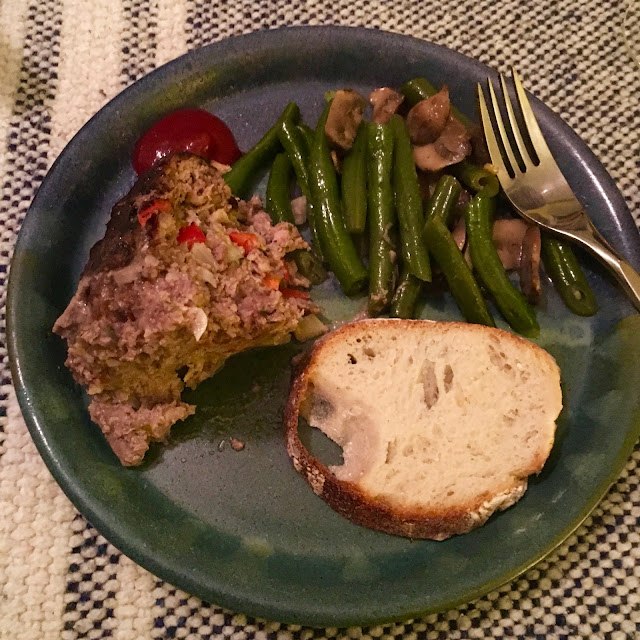| Coffee: one of the most recognizable aromas in our lives, along with peanut butter, chocolate, beer, and some non-foods. |
"I think I sprinkled it lightly with pepper & garlic after I coated it with ketchup. Then heavily put dried onion flakes and a lot of raw carrots. Seal in foil -- not heavy duty foil but the cheap stuff. Bake at 350 degrees till it smells good. Then add water periodically till it smells delicious and it’s done."When she gave people this recipe they were always puzzled, but then they tried it and said oh, I see what you mean about smelling delicious.
I was thinking about this recipe in contrast to the iPhone app that lets you write a set of instructions for those faddish Instant Pots. Via Bluetooth, you can command this over-designed device about timing and temperature -- but even a very smart pot has no sense of smell. No way could you program it to make Jean's brisket recipe. In my kitchen: no instant pot! I'll stick with my old slow cooker: it keeps smells in until you lift its lid, which by-the-way, you're not supposed to do.
Aromas play a big role in my kitchen and no doubt in all kitchens. Obviously, they help when cooking and they make us want to eat, but they do much more also. Some fruits don't produce a truly intense smell unless they are overripe, like peaches, which I love, or bananas, which I hate. We all know how foods smell if they aren't tip-top, like turned milk or aging fish or overcooked cabbage.
Then there are foods that just have a wonderful aromatic character, like the following examples from my kitchen. I hope you can almost smell these --
 |
| Cinnamon. |
 |
| Peppermint -- this is also the time of year for red and white peppermint candy canes, peppermint-and-chocolate coated cookies, etc. |
 |
| Rose Water is incredibly aromatic. Use more than a few drops and you'll regret it! |
 |
| Caraway seeds, enlarged. |
 |
| Sage from our garden, which I hung up to dry. Smells so nice! |
 |
| All the allium family have a strong aroma, especially garlic and shallots. Onions and garlic are essential for many recipes. I feel sorry for people who are unable to eat them. |
 |
| I love lemon! Citrus zest is very aromatic. |
 |
| Pizza: first you smell the bubbling yeast as it dissolves. Then the dough smells so good as it rises. Finally herbs, tomato sauce, and garlic fill the kitchen with delicious aromas as it bakes. |
In my kitchen at the moment, nothing is new. During November, I cooked almost all of our dinners, but always using ingredients and equipment that I've used before, often for many years. I made a pumpkin stuffed with wheat berries for dinner guests who don't eat meat. I baked pizza from scratch (shown at right). I pan-fried steak; made tuna salad; toasted some cheese sandwiches; concocted chili from leftover meatloaf; and made many other meals. And I enjoyed Thanksgiving Day with everyone cooking dinner in Joel and Aparna's kitchen. But nothing new! So I decided to tell you what aromas, odors, and smells are in my kitchen.
One more thing about the blogger event titled "In My Kitchen" -- some of the participants openly review items they've been "given" by manufacturers in exchange for their supposedly objective opinion. Of course they almost always like what they obtain for free, but sadly, they never say how these gifts compare with other available products. As a result, one never knows if it's worth spending actual money on them. Some of these reviews are interesting, though a few bloggers are just shills, wanting something for nothing. About those blogs that exist only to get free stuff for the bloggers: I won't even look at them!
To see about all the great new things in my blogger friends' kitchens, check the list at Sherry's blog -- link here -- she posts news about her own kitchen each month, and many other bloggers add links to their "In My Kitchen" posts. It's fun to hear about new ingredients from people around the world including Australia, the US, Wales, and other interesting places.
All photos and text copyright 2017 by Mae E. Sander. Published at maefood dot blogspot dot com. If you read this elsewhere, it has been stolen.
All photos and text copyright 2017 by Mae E. Sander. Published at maefood dot blogspot dot com. If you read this elsewhere, it has been stolen.










































